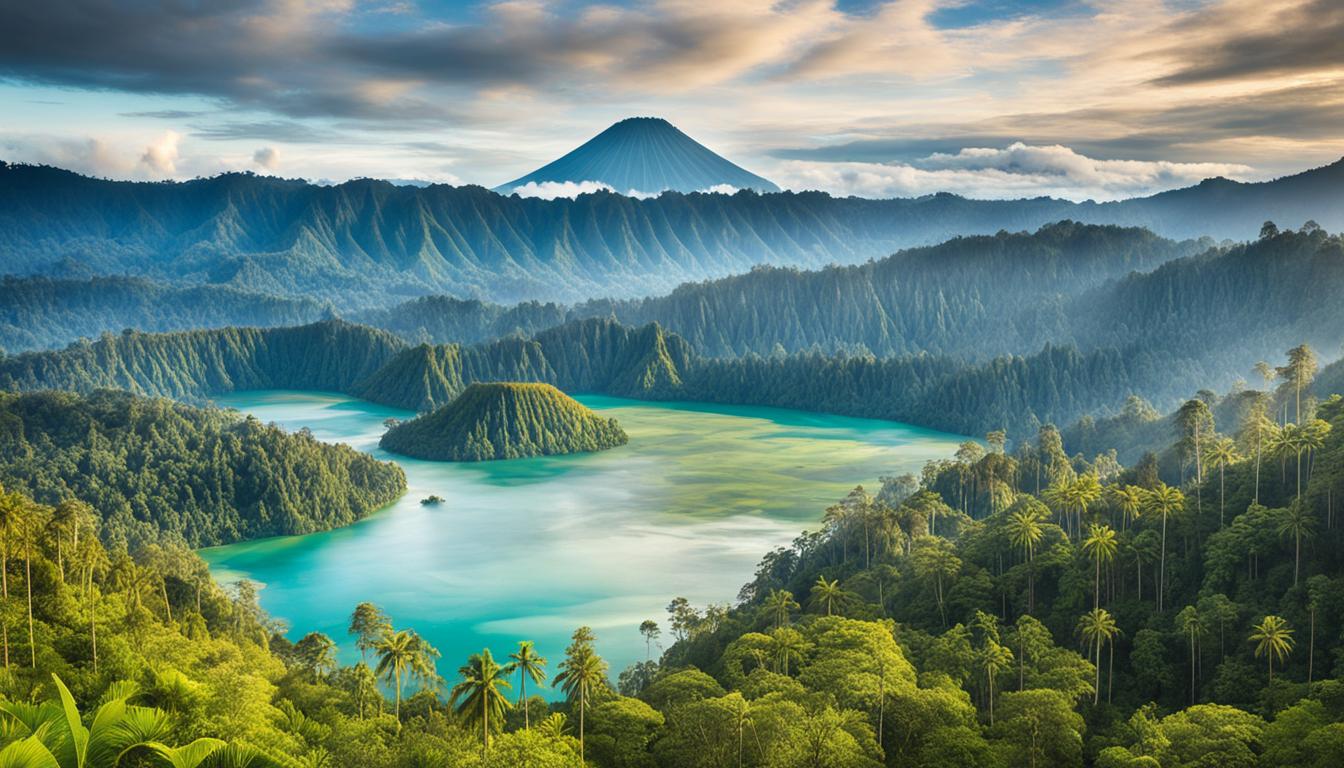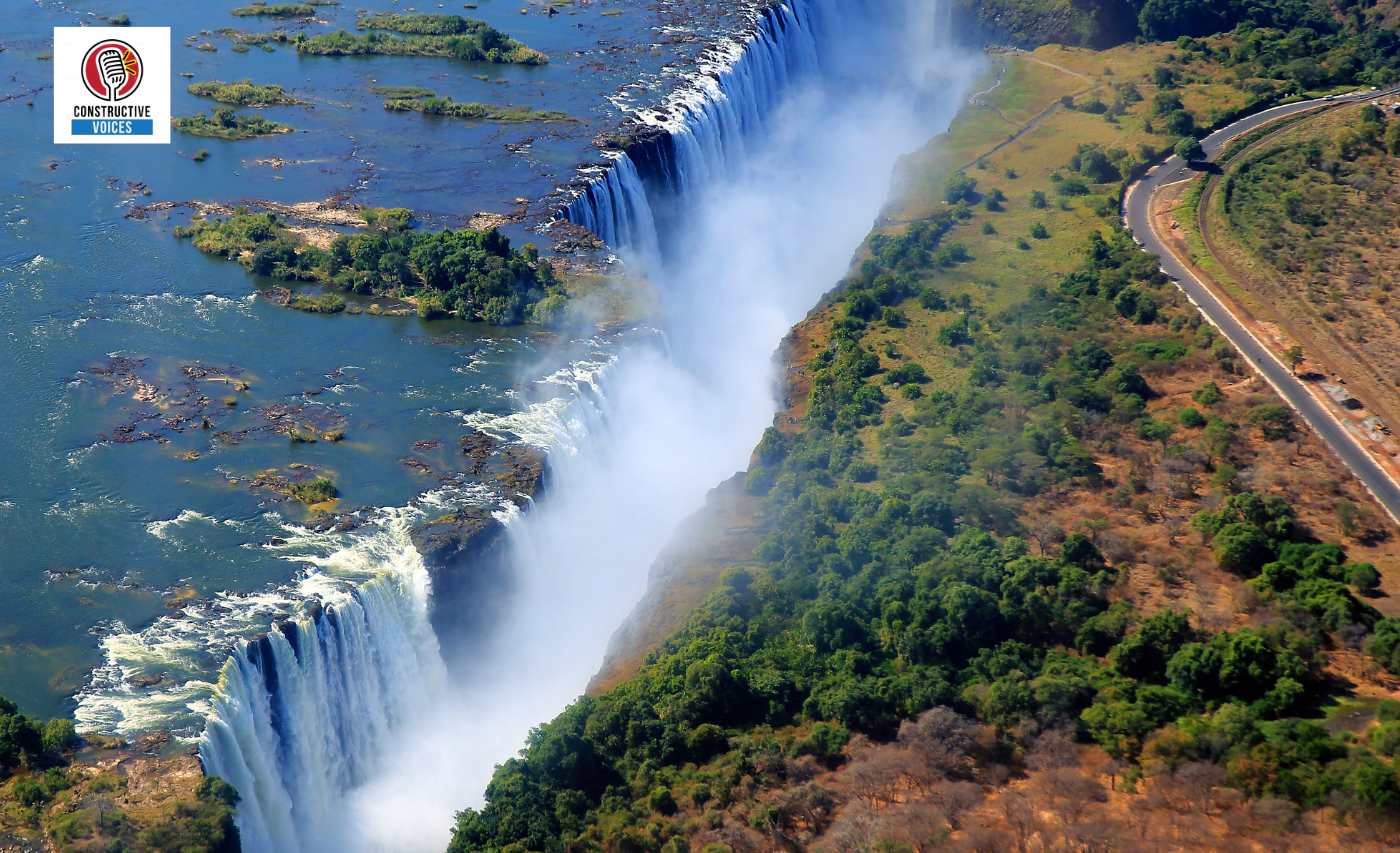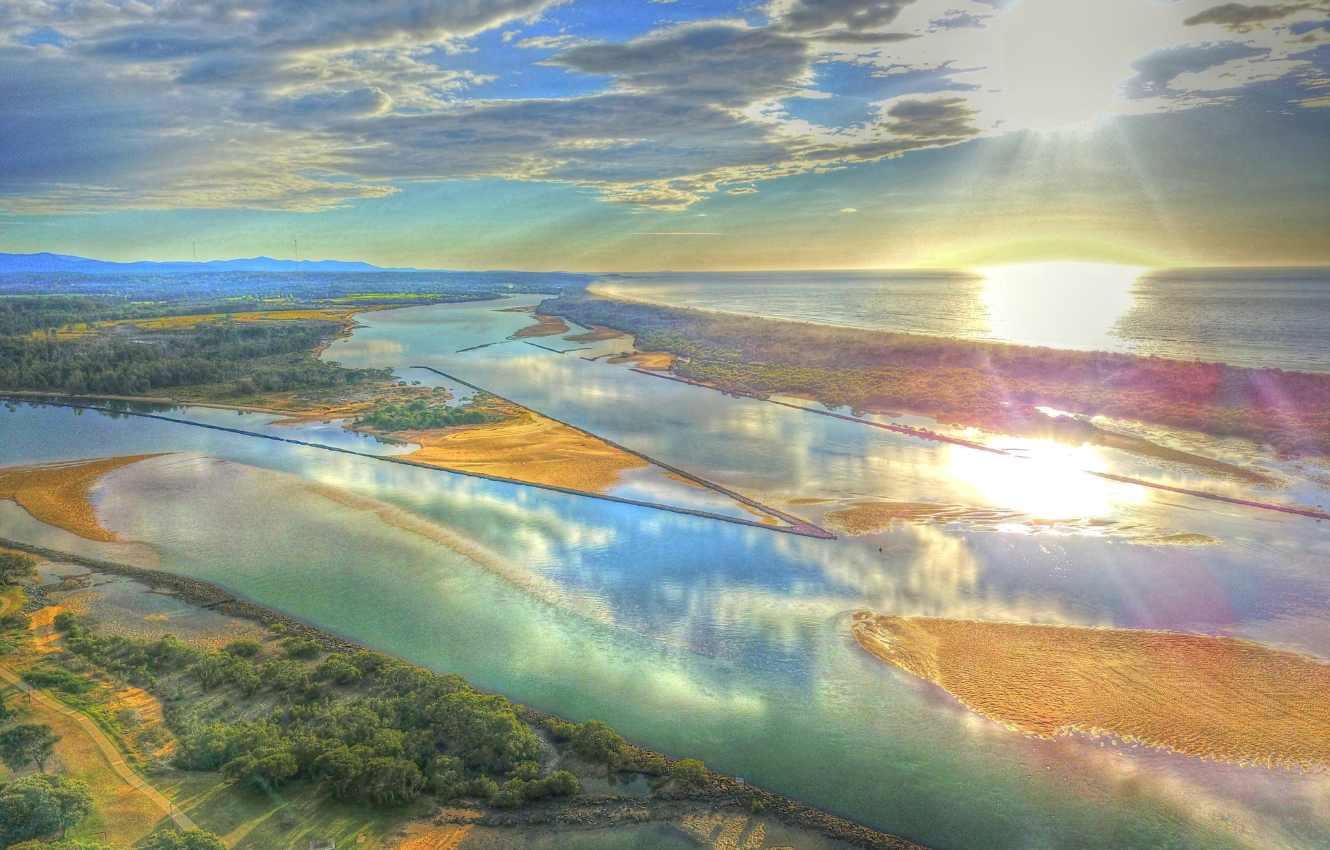India Sacred Natural Sites and Biodiversity
Did you know that sacred natural sites (SNS) are the oldest form of habitat protection in human history?
These sites, which are found across continents, including India, hold significant ecological wealth and cultural heritage. With a focus on Asia and Africa, sacred natural sites mainly encompass sacred groves and forest patches. They have been found to have positive effects on taxonomical diversity, vegetation structure, and cultural uses of biodiversity, making them invaluable for conservation efforts.
Key Takeaways:
- India’s sacred natural sites are important for both biodiversity conservation and cultural heritage.
- These sites serve as refugia for endemic, threatened, and rare species, as well as old-growth trees and forest patches.
- Indigenous communities’ traditional ecological knowledge associated with sacred natural sites contributes to conservation efforts.
- Efforts are needed to address geographical and taxonomical biases in research and conservation of sacred natural sites.
- Sacred natural sites in India can be integrated into global conservation frameworks to enhance their protection and recognition.
The Importance of Sacred Natural Sites
Sacred natural sites hold immense significance in Indian culture, connecting individuals to the spiritual essence of nature. These sites are revered and protected as valuable repositories of biodiversity. Communities, especially indigenous groups, have safeguarded many sacred natural sites like sacred groves for hundreds or even thousands of years.
These sites act as havens for a wide range of endemic, threatened, rare, and specialist species, as well as for the preservation of old-growth trees and forest patches. They provide a sanctuary where nature can thrive undisturbed, fostering unique and diverse ecosystems.
Moreover, sacred natural sites are rich in traditional ecological knowledge, passed down through generations. The wisdom embedded in these sites enhances our understanding of the natural world and contributes to conservation efforts in India.
“Sacred natural sites bridge the gap between spirituality and nature, serving as vital reservoirs of cultural and ecological heritage.” – Environmentalist Ravi Kumar
The Spiritual Connection to Nature in India
The spiritual connection to nature in India runs deep, with individuals recognizing the divinity that resides in every aspect of the natural world. Sacred natural sites embody this belief, offering a tangible link between the material and spiritual realms. Visiting these sites allows people to immerse themselves in the tranquility of nature and experience a sense of unity and harmony.
The Conservation Significance of Sacred Groves
Sacred groves are among the most prevalent types of sacred natural sites in India. These small forested areas, protected due to their religious and cultural significance, play a vital role in conservation efforts. They act as microcosms of biodiversity, housing a multitude of plant and animal species. The conservation of sacred groves not only safeguards these ecosystems but also preserves the cultural heritage associated with them.
Preserving Traditional Ecological Knowledge
Within the boundaries of sacred natural sites, indigenous communities have long held invaluable knowledge about the local environment. Traditional ecological knowledge, passed down through storytelling and experiential learning, encompasses insights into species behavior, habitat dynamics, and sustainable resource management practices. Protecting sacred natural sites ensures the preservation of this knowledge, providing a foundation for sustainable conservation strategies rooted in millennia of wisdom.
Incorporating Spiritual Ecology into Conservation
The inclusion of spiritual ecology, which recognizes the interconnection between humans and the natural world, is crucial for holistic conservation in India. By embracing the importance of sacred natural sites, we can advance conservation efforts that honor cultural diversity, promote sustainable practices, and foster a deep sense of reverence and stewardship for nature.
Biodiversity Conservation and SNS
Biodiversity conservation is a fundamental objective when it comes to sacred natural sites (SNS) in India. These unique sites have been found to possess equal or even higher levels of species richness compared to official reserves. They serve as crucial habitats for a diverse range of taxa, including vertebrates, invertebrates, plants, fungi, and lichens.
The conservation of SNS is intertwined with indigenous practices that have been passed down through generations. These practices contribute to the preservation of diverse ecosystems and the protection of endangered species. By integrating SNS into conservation frameworks, India can further enhance its efforts in biodiversity conservation, ensuring the long-term sustainability of its ecological heritage.
Indigenous Conservation Practices Shaping Biodiversity Conservation
“The traditional ecological knowledge inherited by indigenous communities has played a vital role in shaping effective conservation practices. Their deep understanding of the local environment and species dynamics has contributed to the sustainable management of sacred natural sites and the surrounding landscapes.”
Indigenous communities have long been stewards of the land, employing conservation practices that have stood the test of time. Their intimate connection with nature and the ecosystems surrounding SNS allows them to adopt unique approaches to preservation. These practices include sustainable harvesting techniques, habitat restoration, and the establishment of cultural norms that ensure the sustainable use of natural resources.
The Role of SNS in Biodiversity Conservation
The significance of SNS in biodiversity conservation extends beyond their species richness. These sites are home to endemic and threatened species, as well as invaluable old-growth trees and forest patches. They act as important stepping stones and refuges for species navigating fragmented landscapes. The conservation of SNS, therefore, holds the potential to safeguard not only individual species but also entire ecosystems.
SNS also foster ecosystem resilience in the face of climate change. Their intact habitats and well-preserved biodiversity contribute to the adaptability and survival of species in the face of environmental challenges. By protecting SNS, India can amplify its efforts in preserving ecological balance and mitigating the impacts of a changing climate.
| Benefits of Biodiversity Conservation in SNS | Indigenous Conservation Practices |
|---|---|
| Preservation of species richness | Use of sustainable harvesting techniques |
| Protection of endemic and threatened species | Habitat restoration |
| Conservation of old-growth trees and forest patches | Safeguarding cultural norms for sustainable resource use |
| Enhanced ecosystem resilience | Contributing to climate change adaptation |
Integrating the conservation of SNS and the indigenous practices associated with them into broader conservation strategies is pivotal to achieving long-term sustainability and effective management of India’s rich biodiversity.

Geographical and Taxonomical Biases
Despite the widespread presence of sacred natural sites in India, there are geographical and taxonomical biases in research and conservation efforts. Most studies have focused on Africa and Asia, leaving other regions underrepresented. Similarly, research has primarily focused on plants, with limited attention to other taxa. Addressing these biases is crucial for a more comprehensive understanding of the effects of SNS on biodiversity conservation. Promoting cultural diversity in Indian conservation initiatives can also help recognize and protect the unique ecological knowledge associated with different communities and their sacred natural sites.
Geographical Bias in Research and Conservation
While sacred natural sites can be found throughout India, research and conservation efforts have primarily focused on Africa and Asia. This geographical bias has resulted in other regions, including those within India, being underrepresented in studies and conservation initiatives. By broadening the geographic scope of research, we can gain a more holistic understanding of the effects of sacred natural sites on biodiversity conservation.
Taxonomical Bias in Research and Conservation
Another bias in research and conservation efforts is the focus on plant species, with limited attention given to other taxa. While plants play a crucial role in ecosystem functioning, it is important to also consider the conservation of other organisms such as animals, fungi, and microorganisms. By expanding the taxonomical focus of research, we can gain a more comprehensive understanding of the ecological importance of sacred natural sites.
Addressing Biases for Comprehensive Conservation
To address these biases, it is essential to include a wider range of regions and taxa in research and conservation efforts related to sacred natural sites and biodiversity. By doing so, we can ensure that the conservation strategies implemented are effective and applicable across diverse ecological contexts. Additionally, promoting cultural diversity in Indian conservation initiatives will foster greater recognition and protection of the unique ecological knowledge associated with different communities and their sacred natural sites.
By paying attention to both geographical and taxonomical biases, we can enhance our understanding of the ecological significance of sacred natural sites and develop more inclusive and comprehensive conservation strategies.
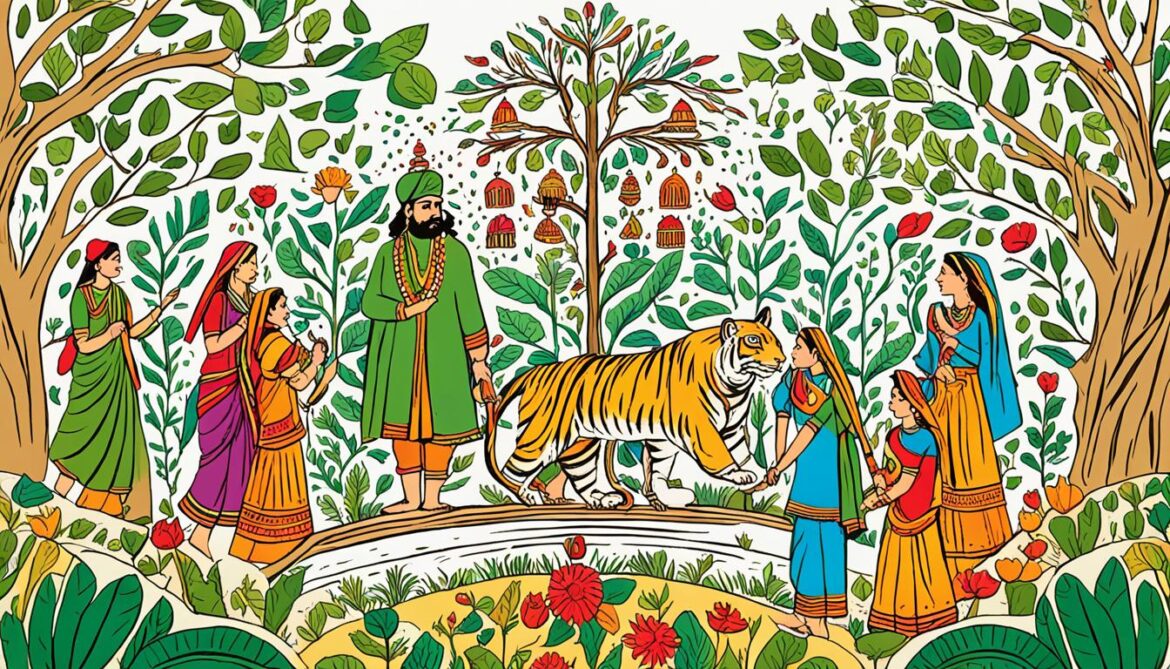
| Geographical Bias | Taxonomical Bias | |
|---|---|---|
| Focus | Africa and Asia | Primarily plants |
| Underrepresented | Other regions, including within India | Other taxa (animals, fungi, microorganisms) |
| Impact | Incomplete understanding of effects on biodiversity | Insufficient consideration of ecosystem dynamics |
| Solution | Inclusive research across a wider range of regions | Broader taxonomical focus in studies and conservation |
Challenges and Threats to SNS
Sacred natural sites in India face various challenges and threats that endanger their preservation and cultural significance. Economic development and urbanization contribute to the destruction of sacred natural sites, particularly those located in areas with high land value. Rapid industrialization, deforestation, and infrastructure development also pose significant risks to the survival of these sacred sites.
The loss of sacred groves is a pressing concern as these ancient forest patches are often affected by encroachment and land-use changes. These groves, which hold immense ecological and cultural value, are threatened by the expansion of agriculture, deforestation, and urban development.
It is crucial to recognize that traditional spiritual beliefs and practices, while integral to the preservation of sacred natural sites, may no longer be sufficient in the face of modern pressures. Efforts are needed to raise awareness among local communities, policymakers, and the general public about the importance of these sites and the need for their conservation.
“The destruction of sacred natural sites not only results in the loss of biodiversity but also erodes cultural heritage and the spiritual connections between communities and the natural world.”
In order to mitigate these threats and ensure the long-term survival of sacred natural sites, effective conservation measures must be implemented. This includes the establishment of protected areas, the development of sustainable land-use policies, and the integration of traditional ecological knowledge into conservation practices.
By protecting sacred natural sites from further destruction and addressing the loss of sacred groves, India can contribute to global efforts in preserving biodiversity and cultural diversity.
The Destruction of Sacred Natural Sites: A Growing Concern
The destruction of sacred natural sites encompasses more than physical changes to the landscape. It entails the erosion of cultural heritage, the disruption of traditional customs, and the loss of spiritual connections between communities and the natural world. The resilience of these sites depends on concerted efforts to safeguard their ecological and cultural value.
Conservation Strategies for Sacred Groves
Sacred groves, being among the most threatened sacred natural sites, require targeted conservation strategies. Here are some key approaches:
- Creating awareness and education programs to highlight the ecological importance of sacred groves and their role in preserving biodiversity.
- Engaging with local communities and traditional custodians to promote sustainable resource management practices within sacred groves.
- Developing collaborative partnerships between government bodies, NGOs, and local communities to ensure the effective management and protection of sacred groves.
- Providing legal recognition and protection to sacred groves through the establishment of protected area status or other relevant designations.

The image above illustrates the devastating consequences of the destruction of sacred natural sites. It serves as a reminder of the urgent need to protect these culturally and ecologically significant areas from irreversible harm.
| Threats to Sacred Natural Sites | Examples |
|---|---|
| Economic Development | Conversion of sacred sites for commercial purposes due to high land value. |
| Urbanization | Encroachment and destruction of sacred sites for infrastructure development. |
| Industrialization | Environmental pollution and habitat degradation caused by industrial activities near sacred sites. |
| Deforestation | Clearing of forested areas within sacred sites for agricultural expansion or timber extraction. |
In summary, the preservation of sacred natural sites in India requires collective efforts to address the challenges and threats they face. By recognizing their ecological and cultural significance, raising awareness, and implementing effective conservation measures, we can ensure the survival of these valuable sites for generations to come.
Relevance to Global Conservation Efforts
Sacred natural sites in India align with the concept of Other Effective Area-Based Conservation Measures (OECMs). These measures, which include various types of conservation areas, contribute to biodiversity conservation through particular land management practices. SNS, with their well-established governance and management systems, can strengthen the network of formal protected areas.
Integrating SNS into global conservation frameworks would enhance the recognition and conservation of these unique sites and their associated indigenous conservation practices. By acknowledging the value of sacred natural sites and incorporating them into broader conservation efforts, we can tap into the traditional wisdom and ecological knowledge of indigenous communities in India and worldwide.
“Sacred natural sites represent a valuable addition to global conservation strategies, offering opportunities for the sustainable management of biodiversity and the protection of cultural heritage.” – Dr. Singh, Conservationist
These sites have a profound cultural significance and play a vital role in maintaining ecological balance. Recognizing their relevance and integrating them into global conservation initiatives can enhance our collective efforts to preserve biodiversity and protect indigenous traditions.
Bridging Traditional and Contemporary Conservation Approaches
Sacred natural sites embody the connection between spirituality, culture, and nature, providing a unique lens for conservation efforts. While traditional conservation practices have long preserved these sites, their integration into global frameworks can bridge the gap between traditional and contemporary approaches.
“By harnessing the power of indigenous conservation practices in India, we can foster a more inclusive and holistic approach to safeguarding our natural heritage.” – Dr. Patel, Ecologist
The indigenous conservation practices associated with sacred natural sites have stood the test of time, offering sustainable alternatives to current conservation strategies. These practices emphasize the interconnectedness between humans and the environment, fostering a deep sense of responsibility towards nature’s preservation.
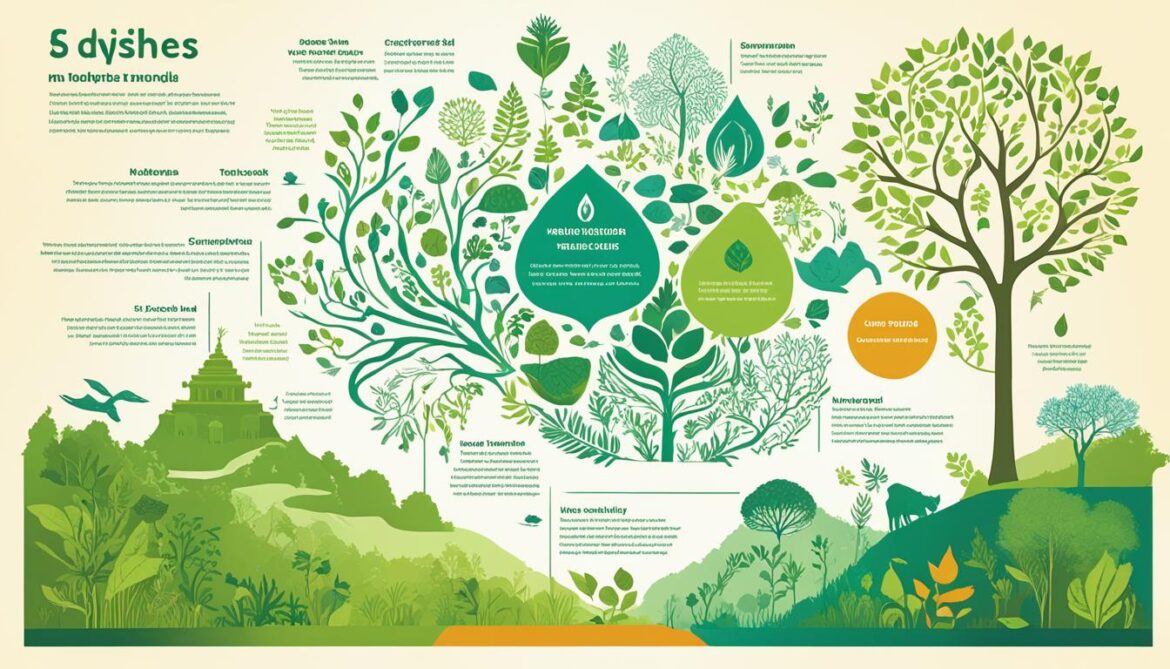
Enhancing Conservation Networks
The inclusion of sacred natural sites in global conservation networks diversifies our approaches to protect biodiversity. These sites serve as ecological hotspots, harboring unique flora and fauna that flourish under the stewardship of indigenous communities.
- Enhanced Ecological Connectivity: Integrating sacred natural sites into the formal protected area network improves ecological connectivity by expanding the habitat corridors for wildlife and facilitating gene flow.
- Cultural and Biological Diversity: These sites provide shelter for endemic and specialist species, further contributing to the preservation of cultural and biological diversity.
- Resilience to Change: The integration of sacred natural sites into conservation networks strengthens the resilience of ecosystems by incorporating traditional knowledge and governance systems.
- Collaborative Partnerships: Engaging with local communities and indigenous groups fosters collaborative partnerships that empower communities, promote sustainable resource management, and ensure the long-term viability of these sites.
The recognition and integration of sacred natural sites into global conservation frameworks not only support the preservation of unique cultural and ecological heritage but also contribute to the achievement of global biodiversity targets.
Sacred Natural Sites in India and Worldwide
Sacred natural sites are not unique to India. They exist in various parts of the world, highlighting the universal cultural and ecological significance of these sites. Different religious and indigenous traditions have their sacred natural sites, which often demonstrate a deep connection between spirituality and nature. Recognizing and protecting these sites globally is crucial for biodiversity conservation and the preservation of cultural diversity.
Preserving Cultural Diversity in Indian Conservation
India’s sacred natural sites are a testament to the rich cultural diversity in the country. These sites incorporate indigenous conservation practices that have been passed down through generations, reflecting the deep reverence for nature held by different communities. By acknowledging and safeguarding these sites, India can honor its diverse cultural heritage while contributing to global conservation efforts.
“Sacred natural sites hold immense value not just for the local communities but also for the world. They are living examples of how spirituality and biodiversity can coexist harmoniously.” – Dr. Rama Singh, Ecologist
Indigenous Conservation Practices: A Global Perspective
Indigenous conservation practices extend beyond India, with indigenous communities worldwide having their own sacred natural sites and unique ecological knowledge. These practices embody sustainable and holistic approaches to biodiversity conservation, rooted in a deep understanding of the interconnections between humans and nature. Sharing and learning from these indigenous practices can enhance conservation efforts on a global scale.
Sacred Ecology: Finding Harmony in Nature
Sacred natural sites embody the concept of sacred ecology, where nature is viewed as a sacred entity with intrinsic value. This perspective promotes the harmonious coexistence of humans and the natural world, emphasizing the importance of protecting and respecting the Earth’s ecosystems. By recognizing and preserving sacred natural sites, we can foster a deeper appreciation for the interconnectedness between cultural diversity and the delicate balance of the environment.
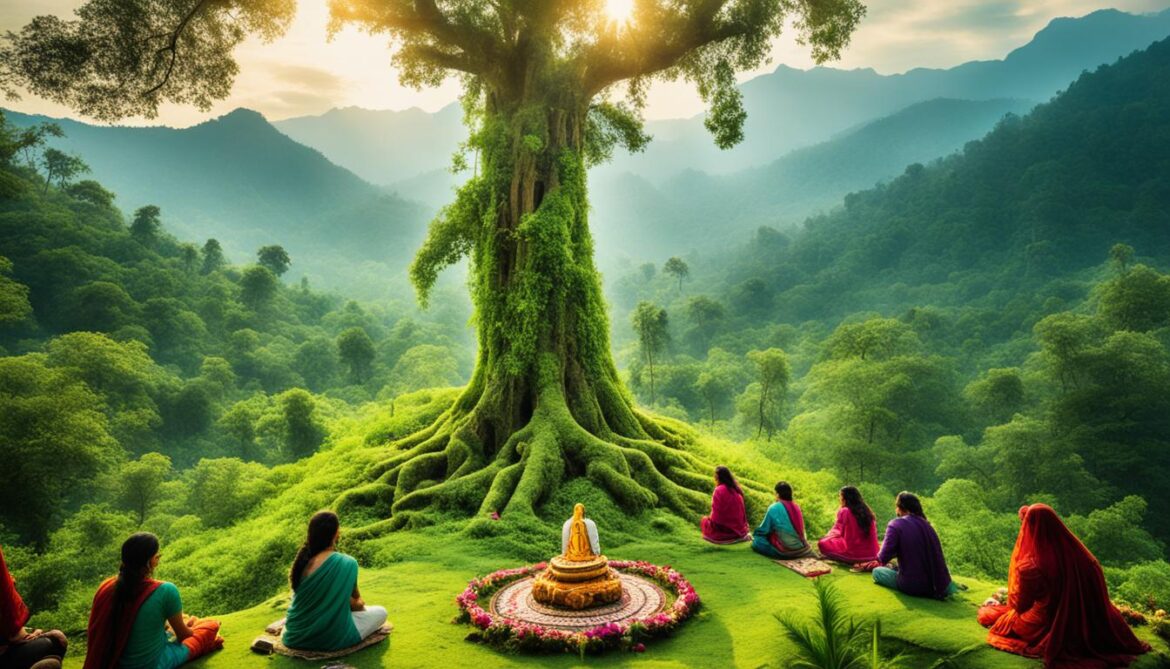
| Country | Cultural Diversity | Indigenous Conservation Practices |
|---|---|---|
| Nepal | Rich mix of Hindu and Buddhist traditions | Sacred forests and mountains protected by local communities |
| Australia | Aboriginal cultures with deep spiritual connections to the land | Traditional land management practices to preserve biodiversity |
| Peru | Inca heritage with sacred sites in the Andean mountains | Conservation of ancient agricultural terraces and sacred landscapes |
Current Conservation Efforts and Future Directions
As the recognition of India’s sacred natural sites and their biodiversity importance continues to grow, it is crucial to strengthen conservation efforts and outline future directions for their protection. Simply integrating these sites into existing protected areas networks is not enough. Many sacred natural sites have unique features that demand special protection or designation.
Standardized management approaches may not be suitable for these sites, as they often coexist with human activities and possess distinct governance and management systems. Therefore, it is essential to conduct further research, build awareness, and engage with local communities to ensure effective conservation of India’s sacred natural sites and the biodiversity they nurture.
“Conservation is not a one-size-fits-all approach. India’s sacred natural sites require tailored strategies that honor their cultural significance while safeguarding their ecological value.”
To further advance conservation efforts, innovative approaches rooted in local knowledge and collaboration are necessary. Establishing partnerships between local communities, conservation organizations, and government bodies can foster effective management plans that balance human needs with biodiversity protection.
A Holistic Approach to Conservation
Conserving sacred groves and other sacred natural sites in India demands a holistic approach that integrates ecological, cultural, and social perspectives. It is about recognizing the intrinsic value of these sites beyond their biodiversity significance and acknowledging the spiritual and cultural connections that have preserved them for generations.
This approach involves:
- Partnering with local communities to develop site-specific conservation practices
- Documenting and preserving traditional ecological knowledge associated with sacred natural sites
- Engaging in capacity-building initiatives to empower communities in conservation efforts
- Incorporating indigenous voices and perspectives in decision-making processes
By embracing this holistic approach, India can enhance the conservation of sacred groves and other natural sites, safeguarding their biodiversity and promoting cultural richness.

Future Directions and the Role of Research
While current conservation efforts are commendable, continual research and exploration are essential for the future of sacred natural site conservation in India. More detailed studies are needed to:
- Evaluate the effectiveness of different conservation strategies in maintaining biodiversity within sacred groves
- Identify the ecological and cultural values of lesser-known sacred natural sites
- Assess the potential impacts of climate change on these sites and their associated biodiversity
“Research plays a pivotal role in informing evidence-based conservation practices, allowing us to adapt and respond to emerging challenges in sacred natural site conservation.”
Furthermore, research should be complemented by efforts to exchange knowledge and experiences among researchers, conservation practitioners, and local communities. Encouraging interdisciplinary collaboration and knowledge-sharing platforms can propel the conservation of India’s sacred natural sites to new heights.
Through the synergy of research, local engagement, and targeted conservation actions, the future of India’s sacred natural sites and the biodiversity they harbor can be secured, ensuring their preservation for generations to come.
| Conservation Challenges | Future Directions | |
|---|---|---|
| Economic Development and Urbanization | Local Community Partnership | |
| Rapid Industrialization and Deforestation | Preservation of Traditional Ecological Knowledge | |
| Infrastructure Development | Capacity-Building Initiatives |
Conclusion
Sacred natural sites in India are invaluable for preserving the country’s rich biodiversity and cultural heritage. These sites have been scientifically proven to positively impact taxonomical diversity, vegetation structure, and the cultural uses of biodiversity. However, it is important to address the existing geographical and taxonomical biases in research and conservation efforts.
To ensure the effective conservation and recognition of India’s sacred natural sites, they must be integrated into conservation frameworks, emphasizing the promotion of cultural diversity and implementing targeted management approaches. By protecting and preserving these sites, India can make a significant contribution to global biodiversity conservation efforts, honoring its deep-rooted spiritual and ecological traditions.
Recognizing the significance of sacred ecology in India and taking proactive steps towards their conservation will not only benefit the local communities but also the global environment. It is imperative that we appreciate and respect the role these sites play in maintaining ecological balance and preserving our natural heritage.





